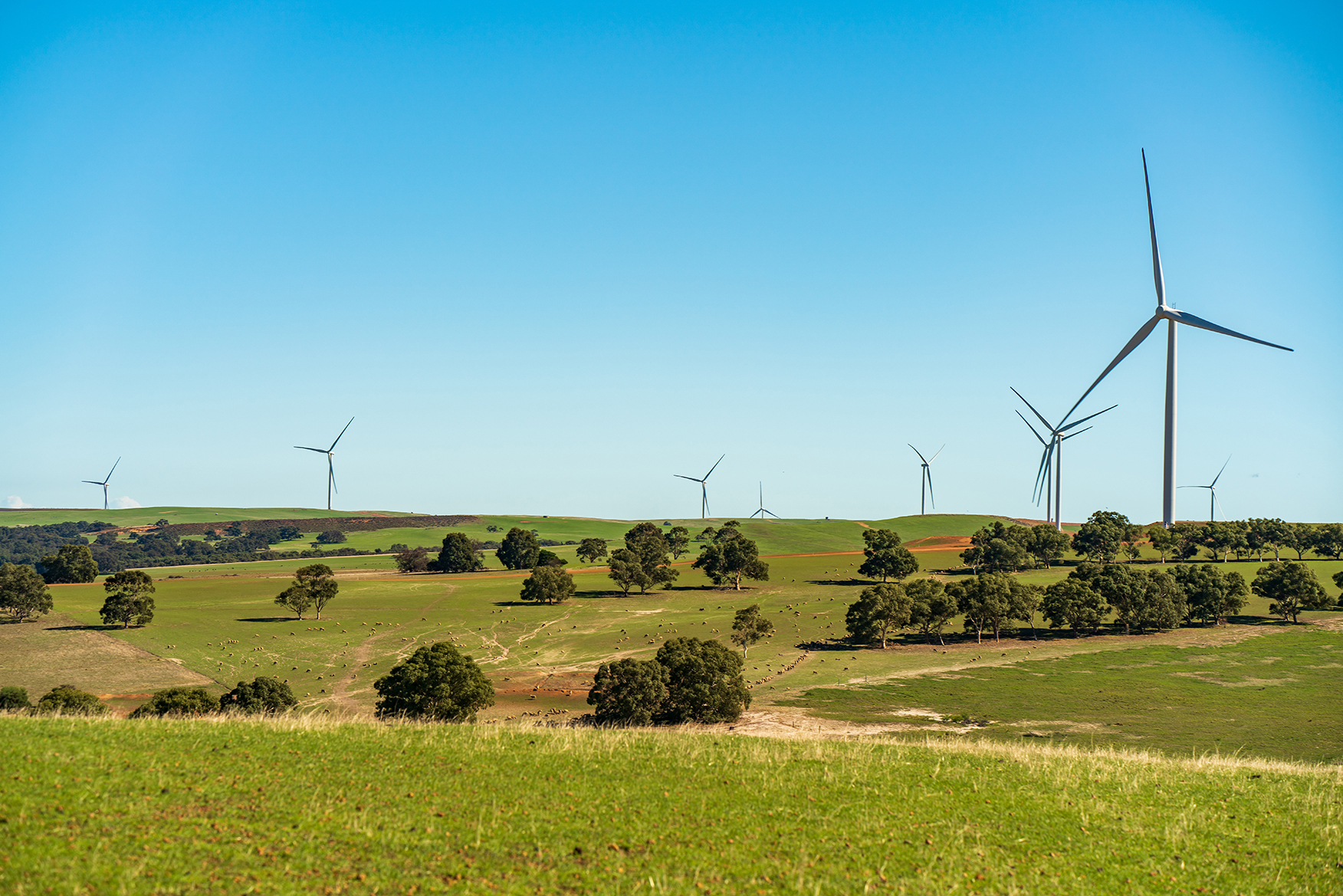The Australian economy is set to decarbonise rapidly, and renewable energy producers are looking at opportunities to bolster their businesses through batteries, hydrogen or other opportunities.
In the rural plains of Western Australia, the Badgingarra Wind Farm sits among rolling fields of wheat and livestock. The turbines feature unique, curved blades that twist and turn while spinning in the wind, designed to be aeroelastic and extremely efficient.
The wind farm project, featuring 37 wind turbines producing 130 megawatts of power and enough for 115,000 Western Australian homes, is underpinned by an agreement with Alinta Energy for the purchase of all energy and large-scale generation certificates (LGCs) under the Clean Energy Regulator’s Large-scale Renewable Energy Target (LRET) scheme.
Saving more than 420,000 tonnes of greenhouse gas emissions annually, the Badgingarra Wind Farm is part of a large renewable energy precinct of other wind and solar farms, owned and operated by energy infrastructure business APA, including the nearby Emu Downs Wind and Solar Farms.
General Manager of Energy Solutions (Power), Matthew Forrest says the precinct’s total installed renewable generation capacity is 250-megawatts.
“APA has a customer-led focus, and in many cases our transition to renewables has been driven by our customers’ desires to decarbonise their businesses and diversify their fuel supply sources. The future growth of APA is aligned to this.”
“These wind turbines produce about 3.7 megawatts each, but we’re already at a stage in the industry where the standard turbines are 4.5 megawatts, and the next generation of designs that we’re working on right now are 6 megawatts. The blades are even longer, even more slender – 60 metre blades have now increased to more than 80 metres long,” Mr Forrest said.
APA is now looking at how its renewable assets can keep pace with the evolving hydrogen market. This includes researching how nearby existing gas infrastructure can support hydrogen supply in the future.
“There are a number of different hydrogen projects on the go, including a research project to test the Parmelia Gas Pipeline for green hydrogen compatibility. This study will be an important step in the transportation of green hydrogen – if successful, it will be Australia’s first conversion of a natural gas pipeline to 100% hydrogen-ready,” Mr Forrest said.
“In addition to potentially providing transmission infrastructure for green hydrogen in the future, we’re also providing firming capacity and battery storage solutions for renewable power, as well as the renewable power generation itself through wind and solar.
“While we’ve traditionally provided only energy infrastructure for our customers, it’s safe to say we’re responding to customer demand and preparing for Australia’s net-zero future,” Mr Forrest said.
APA is actively engaged in the Clean Energy Regulator’s Guarantee of Origin (GO) trials for their hydrogen projects, sharing valuable insights to help co-design the scheme. The GO scheme is being designed to show where a low emissions product has come from, how it was made, and its lifecycle emissions intensity. The Clean Energy Regulator is conducting trials with hydrogen project developers to co-design a GO scheme for hydrogen.
Clean Energy Regulator data shows there is a trend towards expanding existing systems with the number of LRET power stations expansions reaching 385MW total (cumulative) in 2022.
Total capacity added to existing LRET power stations (MW)

Have you considered how modernisation or upgrades could support the clean energy transition and improve the return on your investment?
The Clean Energy Regulator is running a series of case studies on the innovative approaches taken by power stations participating in our schemes. A power station that provides electricity from renewable sources (commonly wind, solar and hydro) may be accredited under the Large-scale Renewable Energy Target scheme. Once accredited, large-scale certificates (LGCs) can be created for the renewable electricity generated – 1 LGC per megawatt hour (MWh). Since its accreditation in 2019, the Badgingarra Wind farm has produced over 2 million LGCs.
LGCs can be sold to liable entities (mainly electricity retailers) who buy and surrender the LGCs to the Clean Energy Regulator to comply with their mandatory scheme obligations. In return, the LGCs provide the power station with a source of revenue in addition to the sale of the electricity generated. In this way, the Renewable Energy Target scheme incentivises investment in renewable energy power stations.
